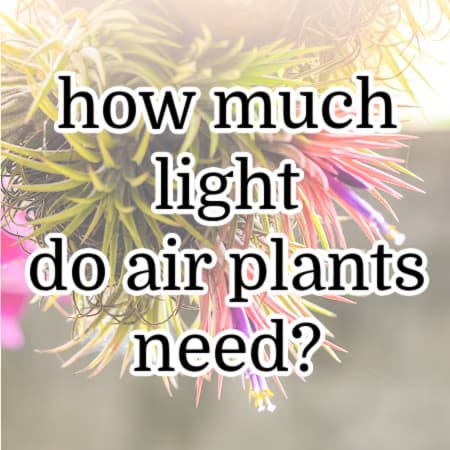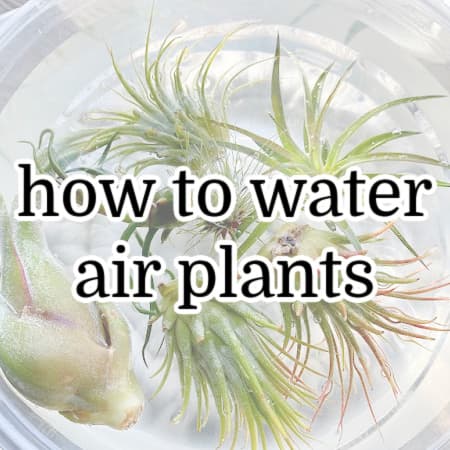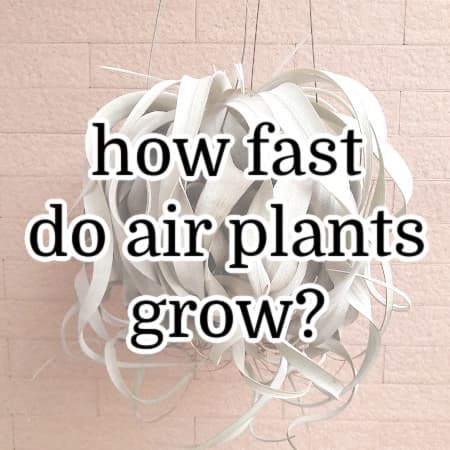7 Key Differences Between Air Plants and Succulents
Are air plants succulents? This is a question that many people have asked themselves. Air plants are often mistaken for succulents due to their similar appearance, but they are not the same things.
In this article, we’ll talk about how these two types of plants differ and look at their specific needs so you can decide which one might be a great choice for your home!
Pin this to your favorite gardening board on Pinterest!
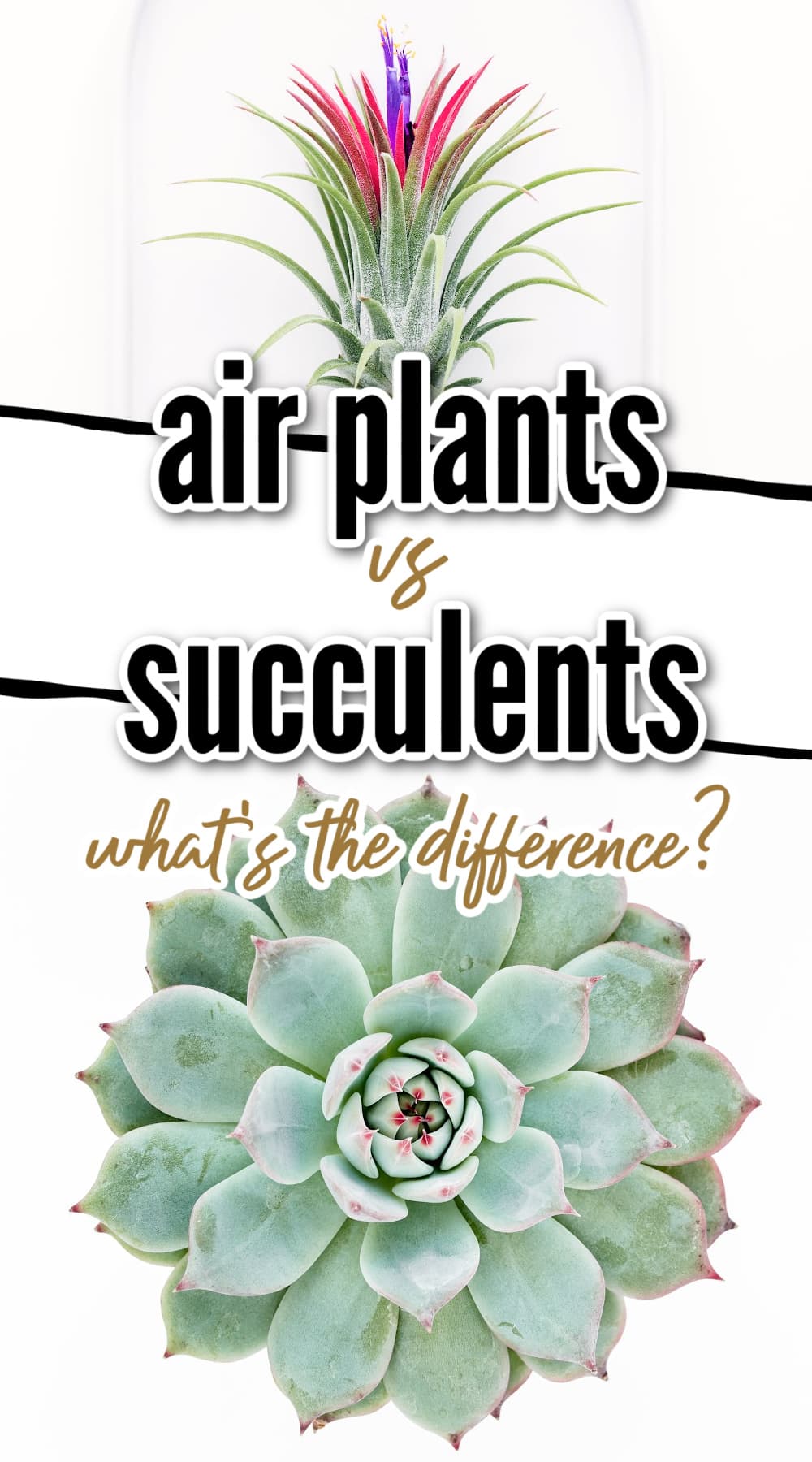
(This post contains affiliate links. If you click one and make a purchase, I may receive a commission at no extra cost to you. Read the disclaimer here. Thank you for your support!)
Succulents vs. Air Plants
Succulents are, according to the Brittannica website, defined as “any plant with thick, fleshy tissues adapted to water storage”.
They’re a diverse group of plants that come in all shapes and sizes, including popular varieties like the Jade Plant and Aloe, to the massive cacti you see growing out in the desert.
Succulents have a root system that they use to absorb nutrients (like most plants), and the leaves varies from smooth, furry, or covered in sharp spines.
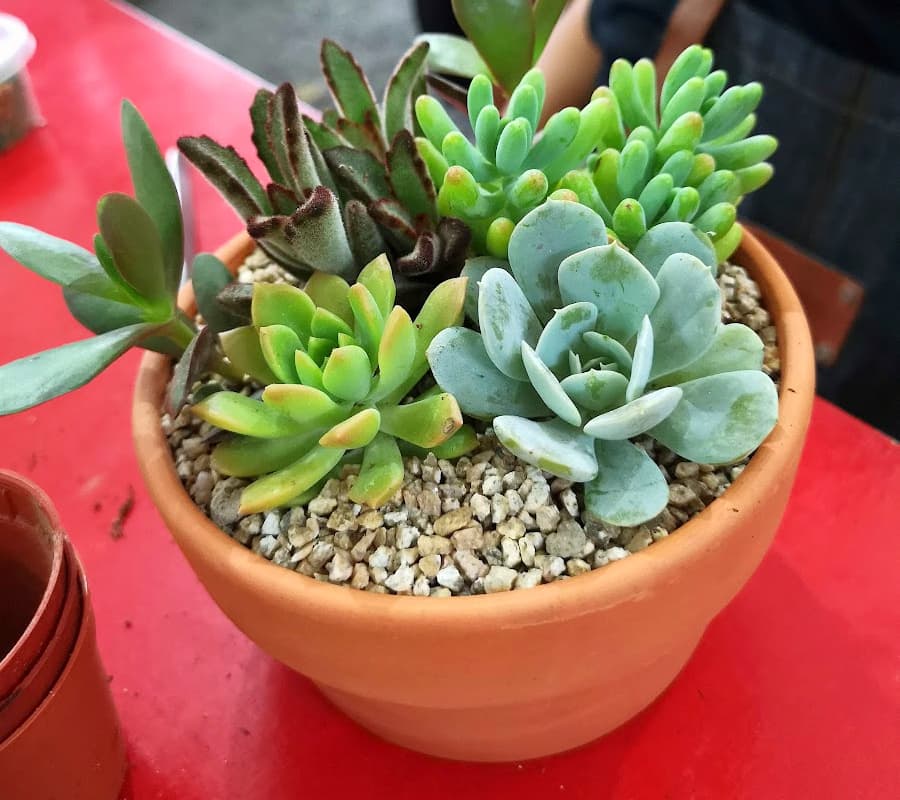
Air Plants (aka Tillandsia), on the other hand, are part of the Bromeliad family and are epiphytes. This means they grow on the branches of trees or structures and don’t require any soil to live.
One example that’s commonly seen in the Southern United States is Spanish Moss.
There are a wide range of plants in this group (540+ types of air plants, to be exact) with different features.
Most have sword or strap like leaves that are in shades of green, gray and even copper. Some air plants have noticeable little hairs and some with a smooth texture.
They have little structures on their leaves called trichomes that they use to absorb nutrients and water.
On some air plants, the trichomes are more noticeable and look like silvery hairs, but even the smoother plants have them.
Air plants do grow roots, but most of the air plants you buy in store or online have had their roots removed. The roots are only used to attach themselves to structures and not used for absorbing nutrients.
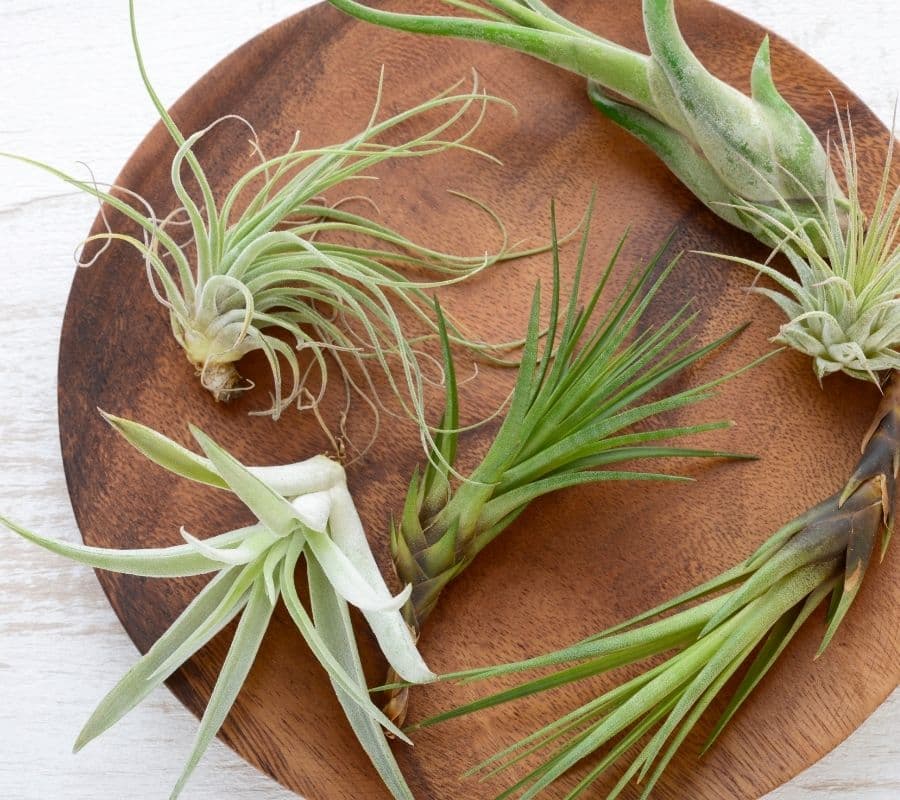
Now that we covered the basic difference between air plants and succulents, let’s dive a little deeper into 7 key differences between them.
Soil Needs
This is a pretty major difference between the two types of plants.
Succulents need soil to grow, and do best in a well draining, gritty soil mix.
While you can temporarily display succulents without soil in a terrarium or hot glued to a pumpkin, eventually they’ll need to get back into the soil to survive.
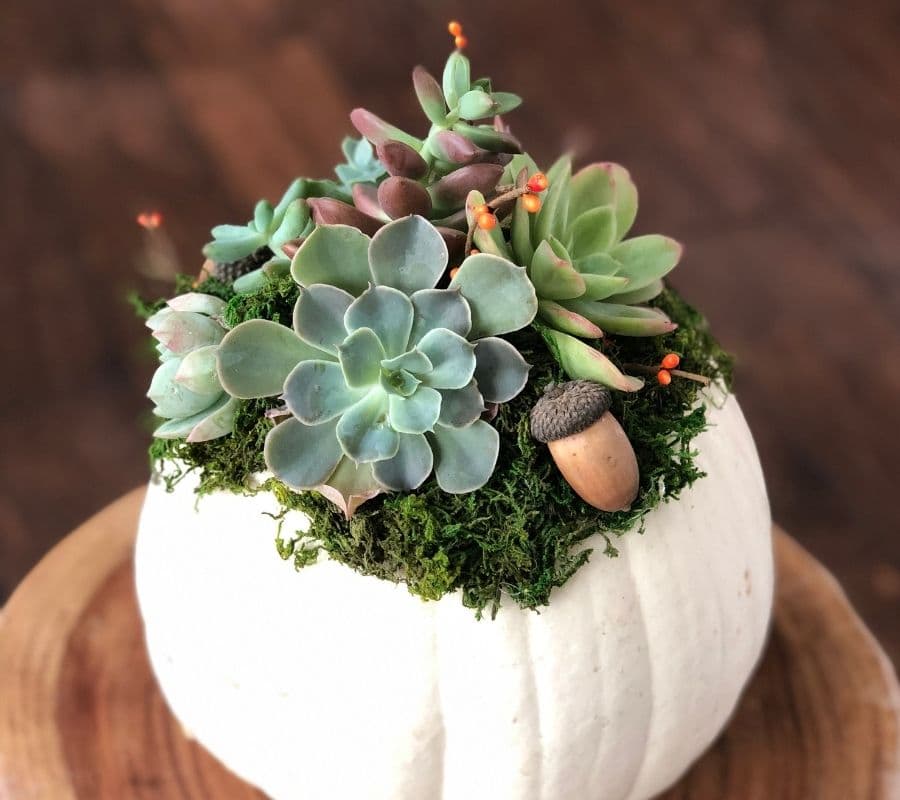
Air plants on the other hand don’t need any soil at all! Since they take in all their nutrients through their leaves, they have no need for soil.
The great thing about that is you can display your air plants just about anywhere that has the right light and temperature conditions!
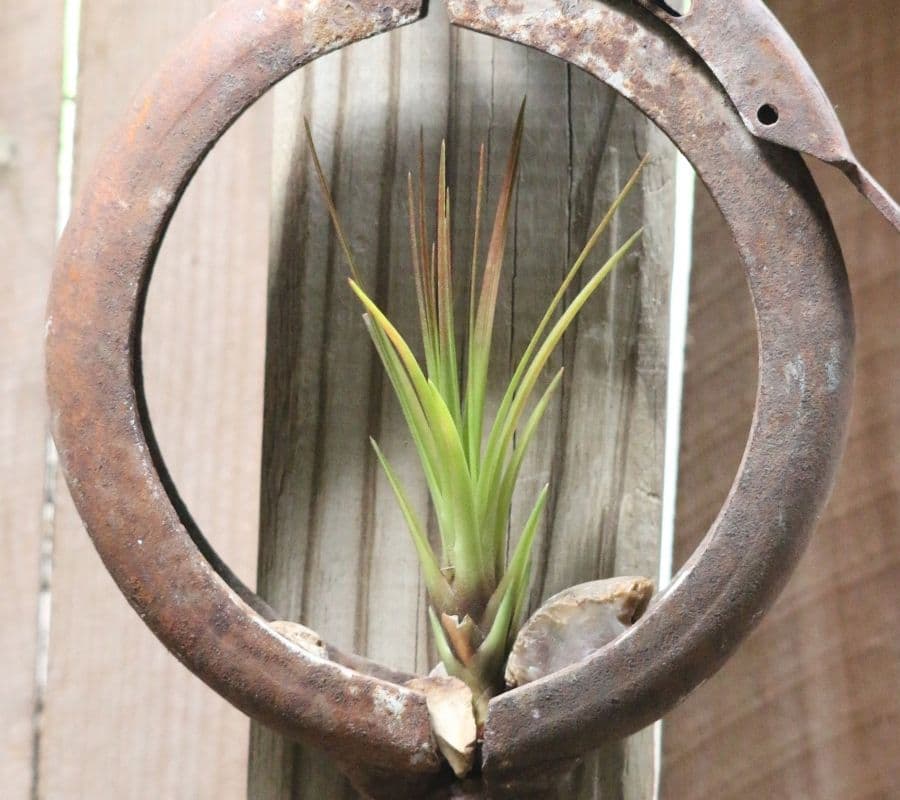
Watering Needs
A succulents natural habitat is the desert, and they’re made to store water in their fleshy leaves and stems. Therefore, it’s really important NOT to over water them, or they’ll rot.
They do need enough water though and it is totally possible to under water your succulents.
Watering on a schedule isn’t great for succulents because their needs can vary.
Instead it’s best to wait until the soil is totally dry, and get to know the signs of thirst and water when you see them. Signs include slightly wrinkled leaves or a dull appearance.
The best way to water succulents is with the soak and dry method, where you fully soak the soil until water pours out the bottom, and then wait until the soil is fully dry before watering again.
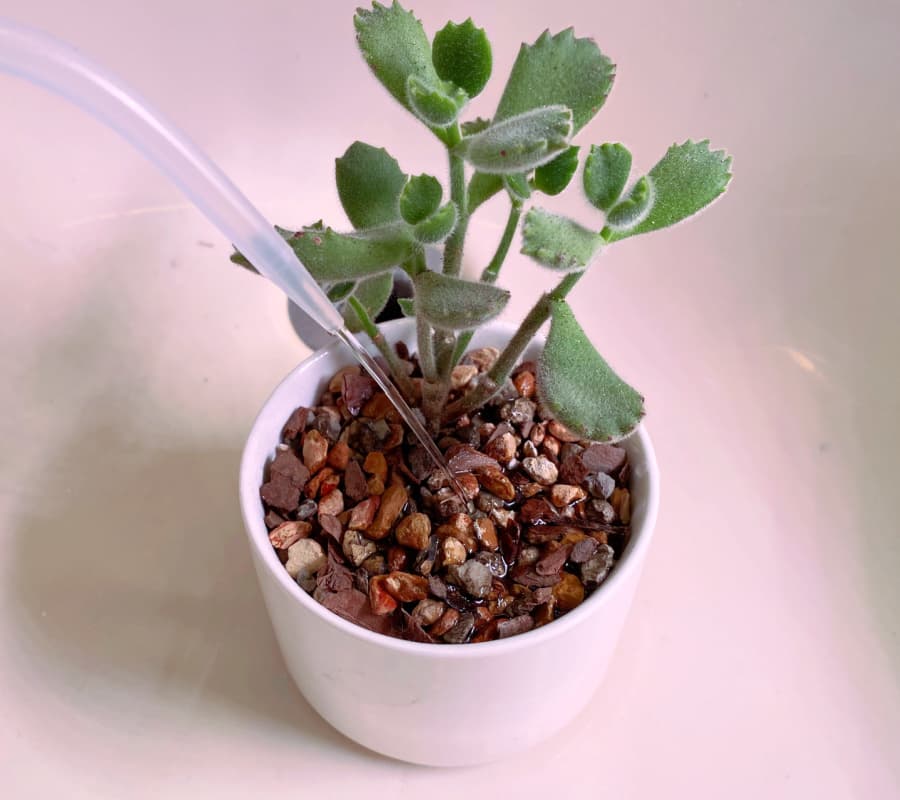
Air plants come from a few different climates, and most air plants you’ll have as indoor plants fall into two types: Mesic and Xeric. Mesic air plants are from a warm, humid environment, and Xeric air plants are from hot, dry climates.
This is important to note, because both types have different watering needs. Mesic plants take a lot of water, and Xeric take less.
A general rule of thumb for watering both types of air plants is to fully submerge them in a filtered water bath for 20 minutes to 4 hours, once a week.
If you have a Mesic plant and it seems like it needs more water, you can increase that to twice a week, or mist it with a spray bottle in between waterings.
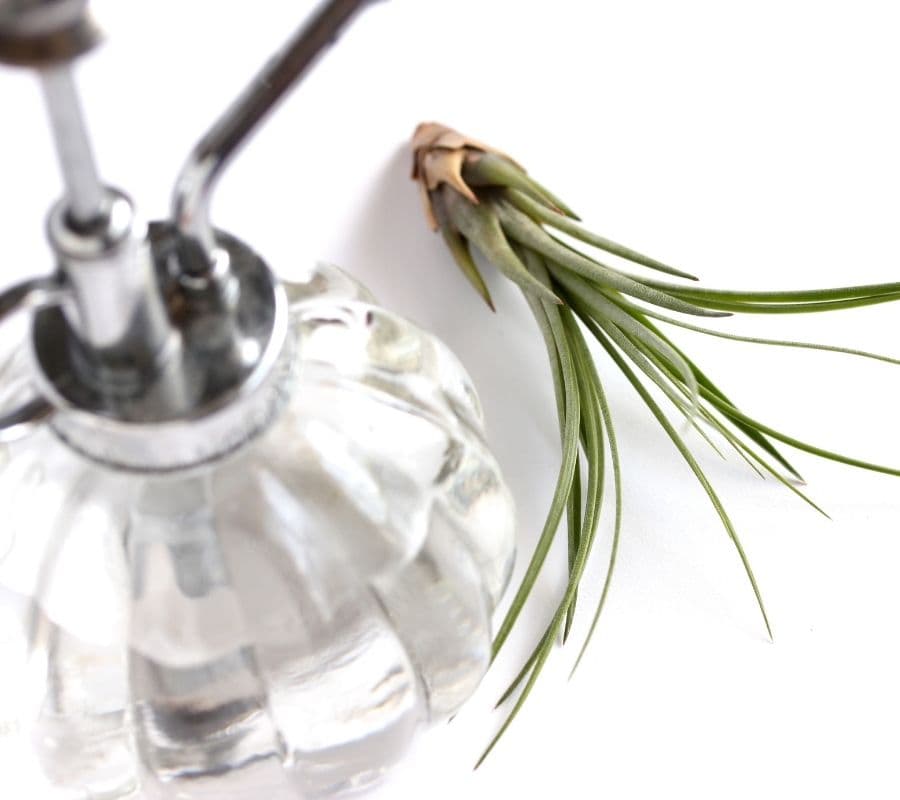
Note: I say filtered water because the chlorine and fluoride present in US tap water can be very harmful for your air plant babies.
At our house we have a counter top, gravity water filtration system and I use water from that for my air plants.
If you don’t have one of those, another option is to use distilled water.
If you must use tap water, leave it out to sit for a few hours before you water with it. That will allow some of the chlorine and fluoride to dissipate.
Foliage Differences
Succulents have fleshy leaves that store water, and there are LOADS of different shapes, sizes, colors and textures of them!
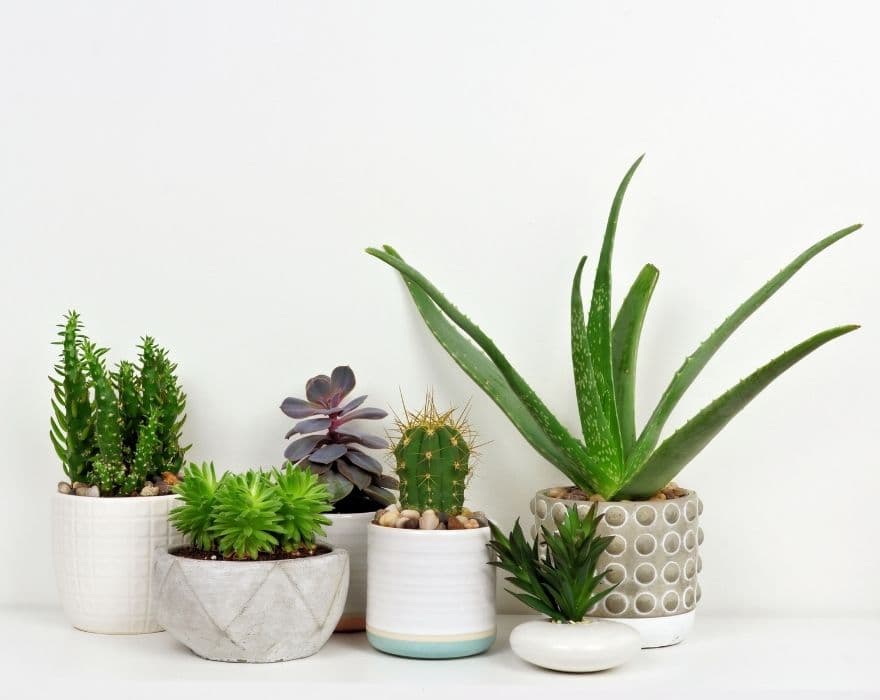
Besides the look of succulent foliage, it also works differently than an air plants.
Succulents have roots to absorb water and nutrients, and their leaves do the photosynthesis work to harness the energy of the sun.
Most varieties of air plants have sword like or long, flat foliage that usually comes in a range of colors between green, gray, silver, copper and burgundy.
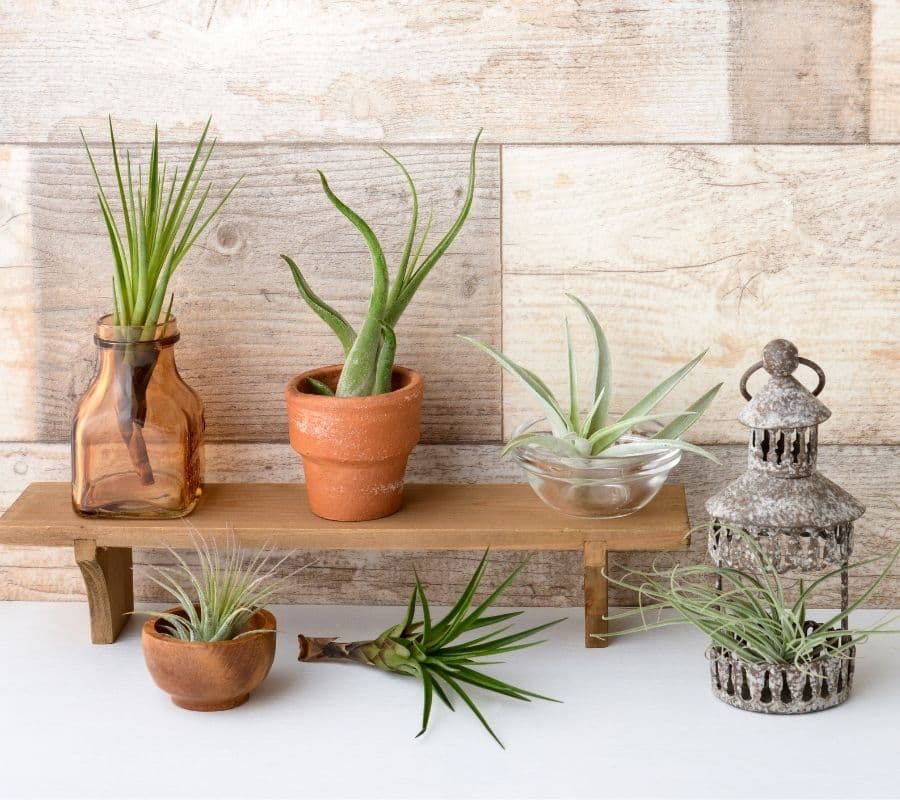
Some air plants have noticeable hairs and scales trichomes, and some are smooth.
All air plants absorb both light AND water with their leaves, and not with their small roots.
Container Needs
Succulent plants do best in a container that has ample drainage and doesn’t hold onto excess water for too long.
Some good examples are terracotta pots, glazed ceramic pots, and even plastic pots are a good choice as long as they have plenty of drain holes.
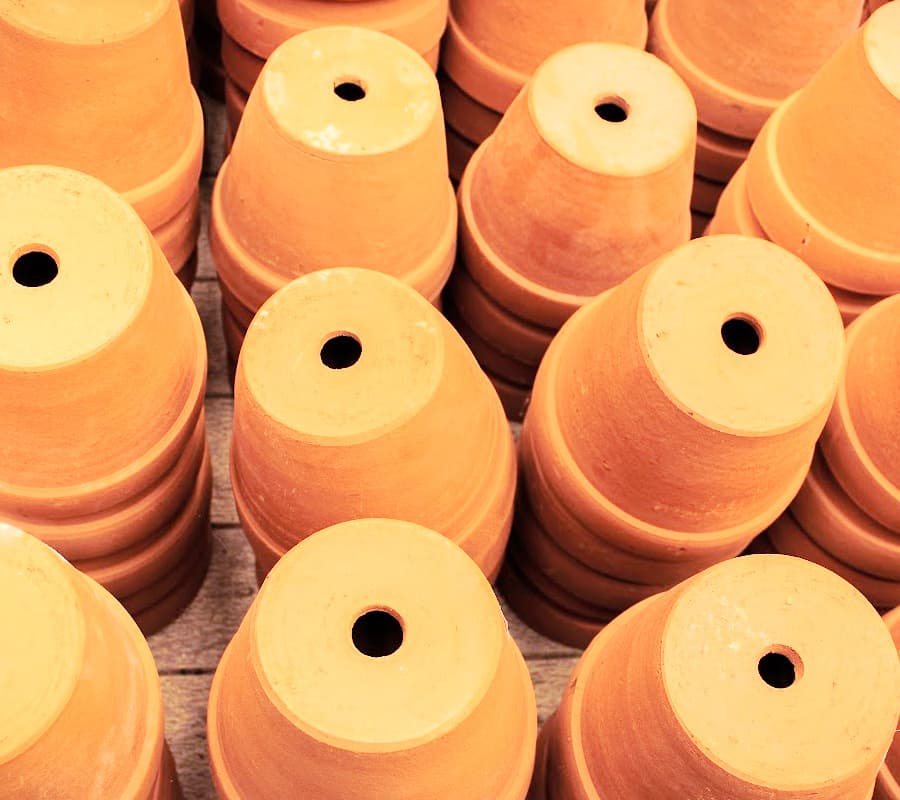
The main concern when potting succulents is drainage holes so the roots don’t end up sitting in water and rotting.
Air plants don’t need containers in the traditional sense, because they don’t need any soil. That opens up so many different display options that other plants don’t have!
You can keep your air plants in a terrarium, vertical gardens, a glass container, use them for fairy homes, hang them on a branch of driftwood or a macrame hanger, and really anywhere that has the right amount of light.
Just be sure your container gets good air circulation.
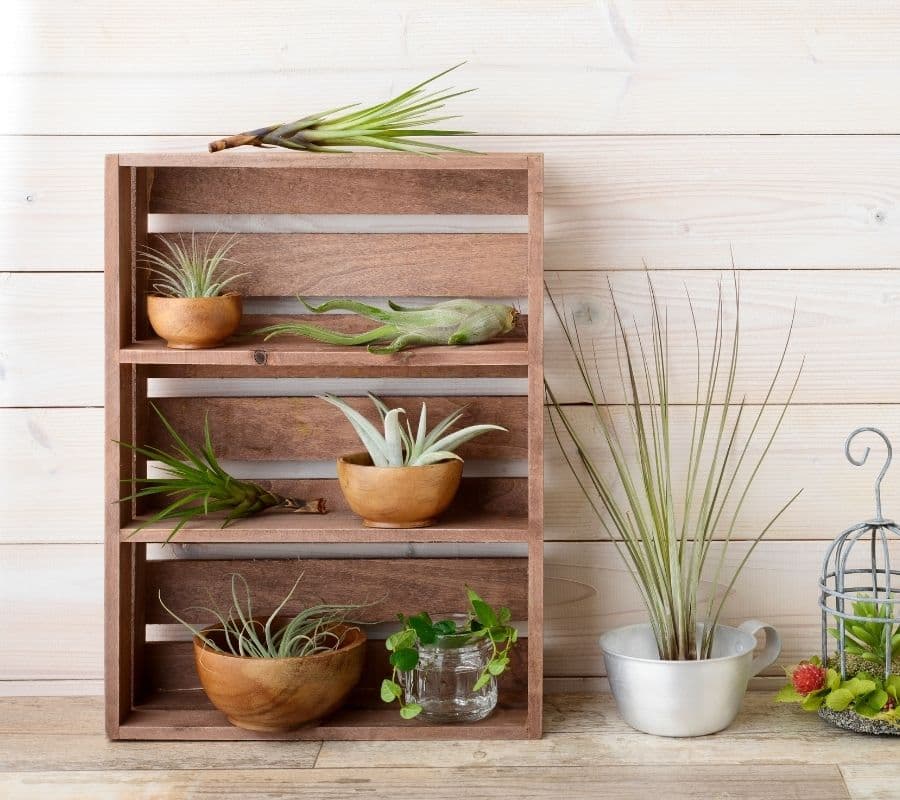
Light Needs
Most succulents require a lot of bright light. They’ll do best with 4-6 hours of light a day, at least. Some varieties can tolerate low, indirect light conditions, but even they do better with a bit more light.
Sometimes it’s difficult to provide enough light needed for indoor succulents using windows, so you may need to supplement with grow lights.

For instance, I live in a house without optimal window placement. Plus it gets really cold in the winter here, so I have grow lights for my succulents and they do great.
Air plants don’t need quite as much direct light as succulents. Xeric varieties can tolerate a bit more direct light, and Mesic ones do better with indirect sunlight.
Your air plants are generally happier with part shade and part sun, and they don’t want the direct sun beating down on them for very long.
Fertilizer Needs
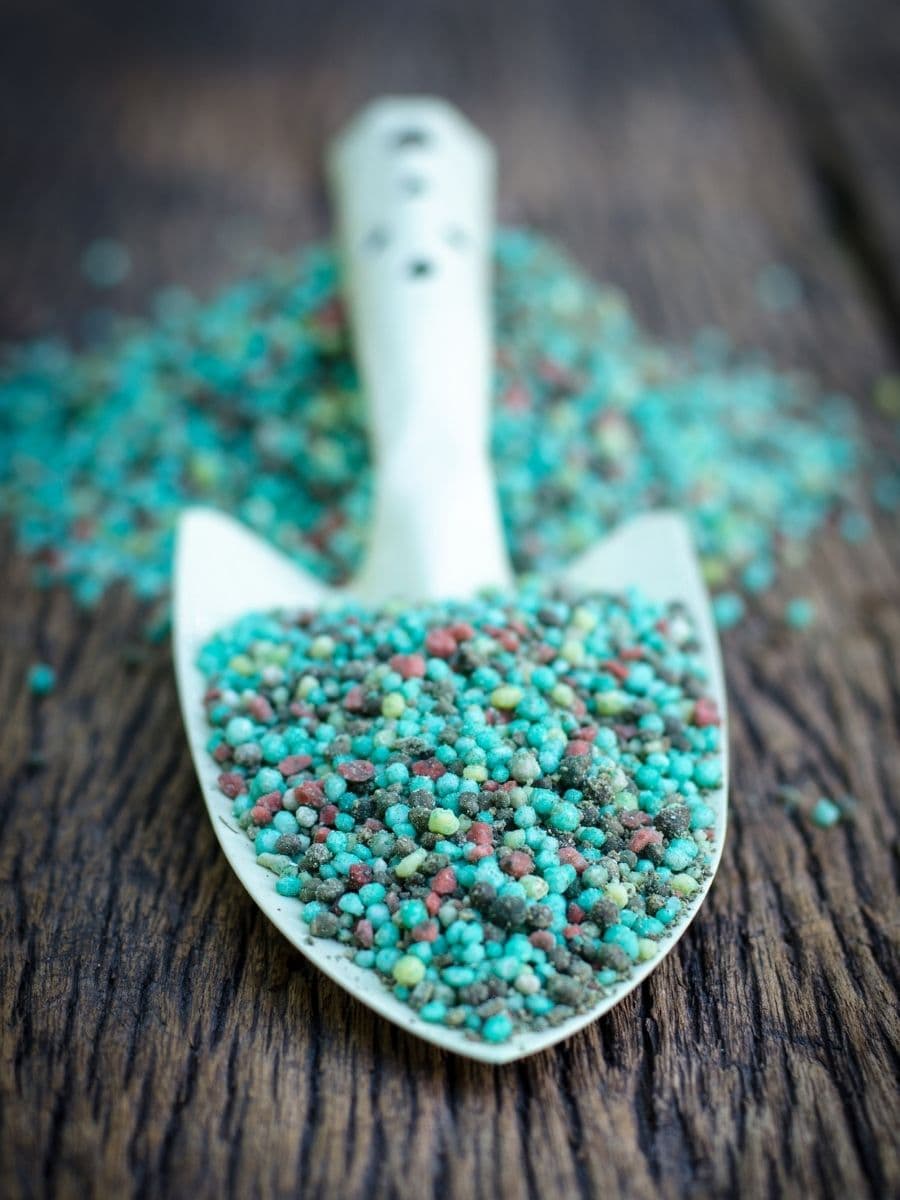
Succulents and air plants don’t require a ton of fertilizer, but if you want to feed them a bit you’ll definitely need to use a different type for the two types of plants.
For succulents, you’ll want to use a fertilizer specially made for succulents and cacti, or you can use a manure tea that’s really gentle and won’t burn the leaves.
With air plants, you’ll want to look for a foliar feeder bromeliad fertilizer. Since they don’t absorb nutrients from soil like other plants, they need a different formula that’s absorbed by the foliage.
Another great way to fertilize air plants gently is by soaking them in pond water during their weekly watering from time to time. Make sure it’s a pond that grows algae to make sure it has the right type of nutrients present.
Lifespan
Depending on the variety, succulents can live from 3 years to 100+ years! There are specimens of barrel cactus have been around for centuries.
Air plants on the other hand typically have a lifespan of 2 to 5 years. The good news is they produce lots of pups that you can propagate to carry on their legacy!
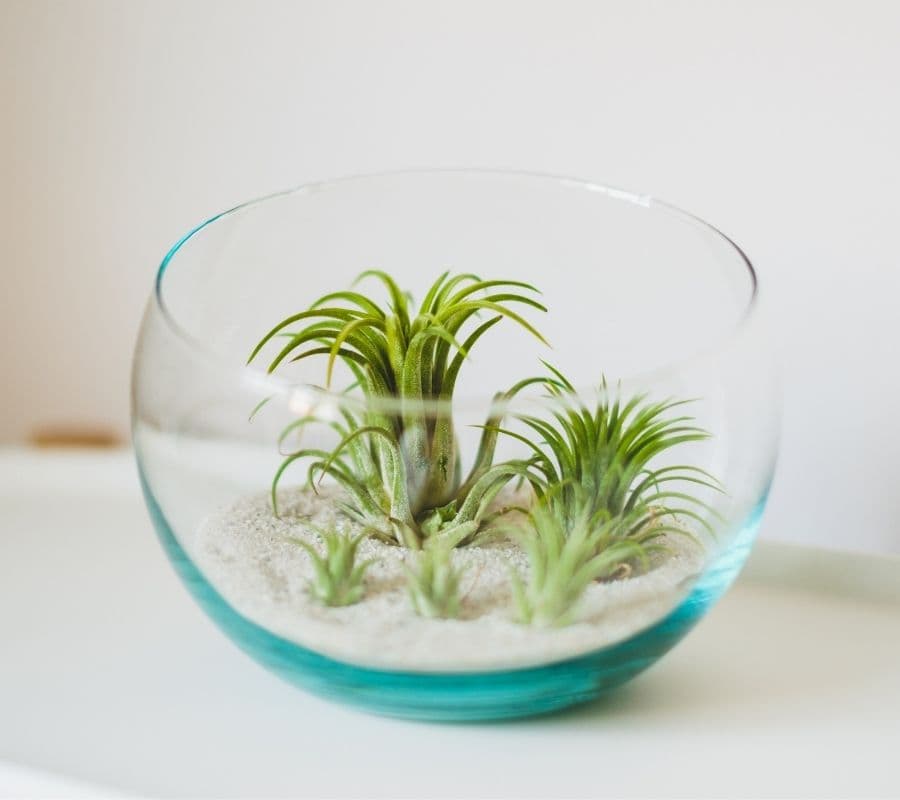
In Conclusion
As you can see, succulents and air plants are very different! What works with your succulents won’t work with your air plants, and vice versa.
It’s important to know which type of plant you have so that you can give them the right care they need. With all these differences, it would be easy to mix up what type of care an air plant needs vs. a succulent.
I hope you enjoyed this article! Got anything to add? Leave a comment down below!

